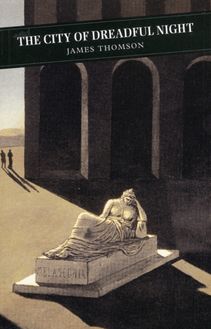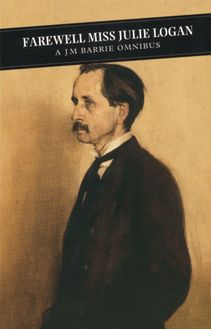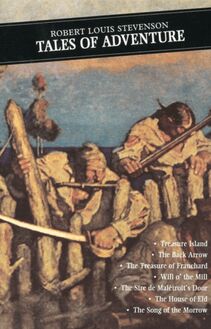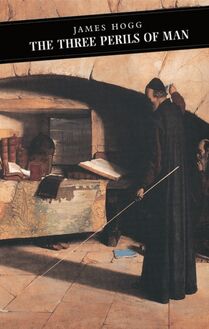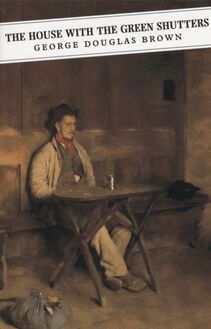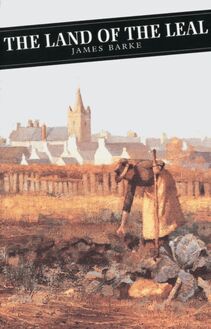Farewell Miss Julie Logan , livre ebook
188
pages
English
Ebooks
2010
Vous pourrez modifier la taille du texte de cet ouvrage
Obtenez un accès à la bibliothèque pour le consulter en ligne En savoir plus
Découvre YouScribe en t'inscrivant gratuitement
Découvre YouScribe en t'inscrivant gratuitement
188
pages
English
Ebooks
2010
Vous pourrez modifier la taille du texte de cet ouvrage
Obtenez un accès à la bibliothèque pour le consulter en ligne En savoir plus
Publié par
Date de parution
01 juillet 2010
Nombre de lectures
2
EAN13
9781847675149
Langue
English
Publié par
Date de parution
01 juillet 2010
Nombre de lectures
2
EAN13
9781847675149
Langue
English
Contents
Introduction
THE LITTLE WHITE BIRD
THE TWELVE-POUND LOOK
FAREWELL MISS JULIE LOGAN
Introduction
On afternoons in the Kensington Gardens in 1897 and 1898 a short, strange looking man with an enormous brown and white dog would often catch sight of two small boys in red berets, walking together with their nurse and their baby brother. The man was James Matthew Barrie, a successful novelist and fledgling playwright; the boys were George, Jack and Peter Llewelyn Davies, the grandsons of the novelist and Punch cartoonist George Du Maurier. Their meeting was to change the lives of everyone concerned as well as result in the creation of a fictional character who has attained mythic status – Peter Pan. Barrie had an astonishing affinity for children; he was able to capture their attention through adventure stories and conjuring tricks and he quickly became a great favourite of the Llewelyn Davies boys, particularly the eldest, George. When later he made the acquaintance of their mother, Sylvia, his entrance into the circle of their lives was complete and he soon came to monopolise the family, though his ubiquitous presence was always resented by the father, Arthur. When the boys were orphaned in 1910 Barrie assumed responsibility for them and became their guardian.
It is appropriate that the story of Barrie’s relationship with the Llewelyn Davies family should have been made the subject of both a book and a television drama. 1 It means that the story exists for us in a number of artistic versions, because as a work of fiction The Little White Bird itself stands as an expression, or an artistic embodiment, of that relationship. Few writers have dramatised their own lives in art in such an explicit and searching a manner as Barrie, so much so that his work has often been seen as little more than a revelation of his complicated personality. The resort to autobiographical experience was, however, a necessary part of his artistic concerns, for Barrie was a writer obsessed with the question of what it means to create art: to play out roles, invent fantasies and live in the world of the imagination. The republication of The Little White Bird offers the chance to restore these themes to the discussion of Barrie’s fiction as well as to situate him more appropriately in the canon of Scottish literature.
Barrie first achieved literary success in 1888 with Auld Licht Idylls , a humorous collection of sketches compiled from previously published newspaper articles. Based on the childhood memories of his mother, the sketches were set in a rural Scotland of the mid-nineteenth century and told of life in ‘Thrums’ – Barrie’s fictional name for his native town of Kirriemuir. The work appealed to the contemporary vogue for regionalism and Thrums soon became as famous as Hardy’s Wessex, prompting Barrie to embark on a similar volume that appeared the following year entitled A Window in Thrums . These two books have become the basis for the discussion of Barrie within the context of Scottish literature though in truth they are little more than apprentice works. That they should have remained in the cultural consciousness for so long is due not to their intrinsic quality but to the fact that they precipitated a host of imitations – works that with their largely nostalgic and sentimental tone earned the now legendary epithet ‘kailyard’. The result has been the comparative neglect of Barrie’s later, more ambitious works of fiction, where he moved his attention away from the genres of local colour and social realism, towards a more reflexive concern with art, creativity and fantasy.
The representation of reality in fiction was one of the issues that preoccupied novelists and critics in the late- nineteenth century and in the work of Henry James in particular there was a movement away from the emphasis on an external reality towards a concern with how the individual mind apprehended, or tried to apprehend, reality. In Barrie’s fiction this concern with the internal life took the form of a developing interest in the construction of reality by the artistic mind. The explicit contrast between the world of reality and the world of the story that we find explored in The Little White Bird was to emerge gradually through the novels that followed on from the Thrums collections. The narrator of The Little Minister (1891), for example, identifies himself as a conscious artist and continually draws attention to his struggle to persuade the reader of the reality and profundity of his fictional illusion. As a result, the novel moves away from the largely realistic portrayal of a community found in Auld Licht Idylls and presents a deliberately artificial world of myth, romance and fairy tale. With the publication of Sentimental Tommy (1896) and Tommy and Grizel (1900) – two novels that had an important effect on the young D.H. Lawrence – Barrie took the issue of the creative mind to the centre of his work. Tommy, the hero of these two largely autobiographical works, is a fantasist whose identity consists entirely in role- playing. He is able to believe so completely in any imaginary situation that he loses the boundary between reality and pretence and has no concrete self. In both works Tommy is presented as the archetypal artist, substituting reality with a world of his own making, but whereas in the first novel it is implied that art and fantasy are the legitimate domain of childhood, the later novel dramatises the debilitating effects Tommy’s fantasies have on other people, and charts his struggle to reject them and embrace reality. Like Joyce’s Portrait of the Artist , the Tommy novels are autobiographical not because they recount factual details of Barrie’s life but because they define the author’s vocation as an artist. Barrie saw this artistic vocation as forming his essential identity and he came to view his childhood role-playing games as the early products of his dramatic imagination. From an early stage in his adult life he kept a series of notebooks where he recorded the events and emotions of his life and began to shape them into works of art. The artist was thus fulfilling his vocation by responding to life in no other terms than as raw material for art, and it is for this reason that Barrie’s works necessarily draw on the events of his life. For him life was, in a very real sense, fiction. All of his mature output turns on the question of the boundaries between fiction and reality and the implications of living inside self-made illusions.
Tommy and Grizel bears a further important relation to The Little White Bird in its preoccupation with male sexuality and sexual desire. Because everything Tommy does is pretence and all his emotions are fake, he is presented as incapable of genuine emotional desire and thus unable to return the affections of Grizel, the woman who loves him. The work is an extended analysis of the failure of male sexual desire and has recently been identified as groundbreaking in the way it treats the sexual warfare within a man. 2 The work was clearly written out of Barrie’s emotions towards his own unhappy marriage with the actress Mary Ansell, which according to some reports was un- consummated and was to end in divorce in 1909. As Barrie transferred his time and affection to the Llewelyn Davies boys he found in that family an outlet for the fatherly emotions that, for whatever reason, he was unable to experience in his own life. When in 1899 Sylvia became pregnant with her fourth child, Barrie was able to join in with the tremendous excitement of the family and he started to jot down ideas for a story in his notebook. There were already a number of notes for fairy stories that were clearly suggested by the tales he was telling to George, but one note in particular proved the catalyst for a work: ‘my white bird a book, hers a baby’. 3 Through his adventures with George, Barrie had found an idea for the exploration of the theme that had been slowly emerging through his writing. Life, expressed through its ultimate source of maternity, was to be contrasted to Art and its source: creative inspiration.
The contrast between the creative artist and the creative mother provides the frame within which the narrative of The Little White Bird is structured. The narrator, a retired soldier and London bachelor clubman, tells stories to a little boy in order to recreate him as a fictional character so that he can claim parental possession of him. The narrative thus turns on the act of narration itself and it is significant that the narrator’s claim to ownership takes the form of a myth that seeks to transcend natal creation: the extended fantasy that he tells David – that children do not originate in the womb but have a previous life as birds in the Kensington Gardens – has the aim of disempowering the biological mother and laying claim to prior knowledge of her child. The Little White Bird is thus on one level a fantasy of self- fathering – a recurrent theme of fin de siècle works – where the asexual world of art is claimed as superior to the real world of sexuality and childbearing. It is no coincidence that the narrator often asks us to ‘conceive’ his imaginary situations; he views writing as a substitute for giving birth and he is able to indulge in his fantasies of self-fathering because of David’s implicit belief in the stories that he is told. Barrie saw children as archetypal artists and fantasists, and David’s capacity to take the story as reality enables the narrator to cast himself as the creator of the boy’s identity.
Because the narrator is a fantasist, and because parts of the work consist of stories that he is telling to David, The Little White Bird has a complicated layering of address and a shifting narrative tone. Some passages are addressed solely to the reader and others principally to David; the Peter Pan chapters, however, are narrated in a tone
